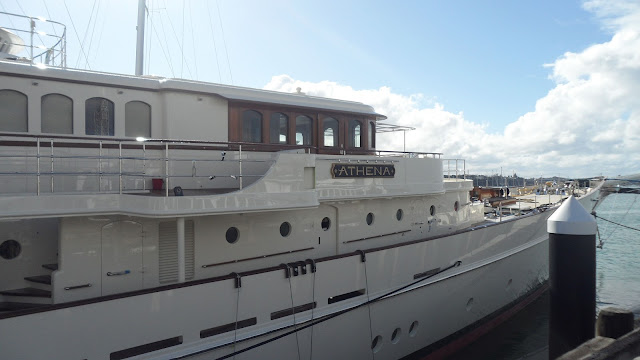My task yesterday was the forward bulkhead camber which was actually not my one so far. Before doing that I was sanding bits of bid and nothing else. Anyway, I could find the plank for that glued the day before. I have thought for a while and asked Vaughn the magnificent and thought again bit a while again and made it. The way I should have made is that I sand it down just one side (I sand it down with a big belt sander, sanding both side and had to be aware of the thickness of each layer). When I was using the belt sander, the plank kept being stuck in it, maybe because I didn’t turn the suction switch and actually I don’t know how to turn on the extractor for it. It has an automatic extracting system but sometimes I had to switch on the motor on the right side of it. As well as this, the paddle for measuring thickness didn’t work either. I have to know these. I used a trimmer yesterday and a router today for rebate for the camber. One tricky thing to mind is that the camber is somewhat stiff forward because it is narrow and rebate angle has to be changed that part. Before coming to this stage we would have thought about this. Definetely, next time. Dry fit, adjust and done. Make sure get the faying surface wide enough. We did a mistake of crit(?) as well. It was too long and the bulkhead banded to aftward on the top, so the door for it didn’t fit in. We cut it and used a wedge which was white cedar same as the stem. Thwarts are all right now. Make sure they don’t sit on the wall and push it out. They have to be sat on the risers. Using bend saw downstairs today, I realized that it is pretty hard to make detail like circle or things like that in just one cut. I almost cut the planking. Cut roughly with it and use another machine (sanding) or by hands. Mind it. Buzz, Tapu and I talked about surf board today. Row lock chock is one thing that I learned today. They may be in the middle of each thwart. Find the most spot to let the fishing rods be. Learning how to use coping saw and the purpose of it, I was heard that when sanding follow the grain. White cedar is not really hard and strong wood, which means that it is not hard to manufacture. Quarter knees’ arms are better to be thin rather than being thick so that break when the sheer strakes changes. We made two sanding sticks which looked like women’s nail bar(?) or something and is supposed to be quite useful. We can even make a bevel for using it in different angles. To fill the nail holes, we can use masking tape after fill them with glue. Bear tomorrow.
Ruthless
Reakless
Tender
































